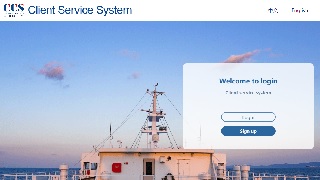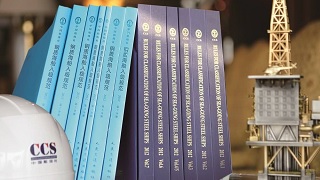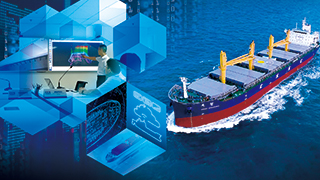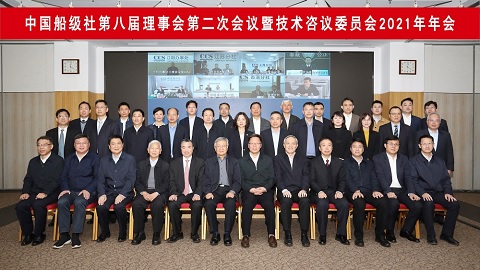By Wang Rong from CCS Jiangsu Branch
In September 2020, Xi Jinping, the General Secretary of CCP, stated at the general debate of the 75th Session of The United Nations General Assembly, "China will scale up its Intended Nationally Determined Contributions by adopting more vigorous policies and measures. We aim to have CO2 emissions peak before 2030 and achieve carbon neutrality before 2060." Against this background, China's new energy development has been further accelerated. Compared with other energy resources, wind power has significant advantages. Since the 13th 5-year plan, the Chinese Government has strongly supported the development of offshore wind power, and the policy preference has been more significant. China's offshore wind power faces unprecedented development opportunities and has been the favorite for new energy development.
Advantages of offshore wind power
Offshore wind power has less negative impact on environment thanks to rich resources and stable wind speed. As wind turbines are far away from coasts, the resultant noise and visual disturbance are negligible. The characteristics, including high unit capacity and long annual utilization time (annual utilization hours), of these power projects have gained the favor of energy investors. Moreover, offshore wind power projects can be located near developed areas and close to power load centers, and thus both grid connection and consumption of wind power are easy. Wind power projects take no land or similar resources, enabling its rapid development in recent years. China's offshore wind power, with gradually-improved technologies, has entered a stage of large-scale development. According to the observation result of world's energy development trend, the offshore wind power in Europe has outpaced that in China. However, with the guidance of national policies, China's offshore wind power develops rapidly, tending to overtake Europe. The large-scale development of offshore wind power at China's sea areas has been ensured.

Figure 1 Installed capacity of offshore wind power in Europe (by the end of 2020) Development status of China's offshore wind power
China has a long coastline and rich offshore wind energy resources. The offshore wind power development potential in the waters within the range of 5m to 25m deep and 50m above sea level is about 200 million kW, and that within the range of 5m to 50m deep and 70m above sea level is about 500 million kW. The wind energy resources in near-shore inter-tidal zones and at deep sea are also rich. Compared with onshore wind power projects, offshore wind power projects have higher wind speed and longer annual utilization hours. Wind power farms and wind turbines can be arranged in a wider range. Besides, offshore wind power projects are located near the areas of coastal power consumption load centers, and therefore has considerable development potential.
By the end of 2020, the global installed capacity of offshore wind power had exceeded 35GW, nearly 3 times of that 5 years ago. The installed capacity of offshore wind power in the U.K. was 10.206GW, ranking first globally. China's total installed capacity was 9.898GW, only 308MW lower than that of the U.K. and higher than that of Germany, and ranked second globally. In 2020, the global added installed capacity of offshore wind power was 6.067GW, and China's added installed capacity exceeded 3GW. The latter accounted for more than a half of the former. By this year, China had been the country with the highest installed capacity of offshore wind power in the world for 3 consecutive years.
During the "13th five-year" plan implementation, China's accumulative installed capacity of wind power reached 220 million kW, making contribution to achieving the goal that the total consumption of non-fossil energy would account for 15% of that of primary energy resource by 2020. According to the "14th five-year" plan, we will build a clean, low-carbon, safe, and efficient energy system, vigorously increase the scale of wind power generation, accelerate the development of distributed energy in the eastern and central regions, orderly develop offshore wind power and increase the proportion of non-fossil energy in total energy consumption to about 20% by the end of 2025. Global Energy Interconnection Development and Cooperation Organization (GEIDCO) drew a conclusion in China's "14th 5-year" Power Development Planning Study that, comprehensively considering the factors including energy transition needs, social-economic development and industrial restructuring, there will possibly be 290 million kW added installed capacity of wind power in the "14th five-year", with an average annual added installed capacity of 58 million kW.
Currently, the offshore wind power projects under construction in China are concentrated at shallow and offshore waters, mostly 10m to 30m deep. The main forms of offshore wind turbine foundations include mono-pile foundations, jacket foundations, bucket foundations and high-pile cap foundations. The unit power of wind turbines is mostly 4MW to 6MW. The electric energy obtained by converting wind energy will be transferred in the form of AC electricity directly to the grid through submarine cables. As the distance to coastline gets longer, traditional AC power transmission mode is not economic and will be replaced by the DC power transmission mode, so as to minimize the electricity loss during transmission.

Figure 2 Distribution of owners of approved and under-construction projects in China

Figure 3 Layout of nationwide offshore wind power development in 2020 Prospect of China's offshore wind power development
Predictably, with the continuous construction of offshore wind power farms at shallow waters, the available area of shallow waters will be reduced year by year. In 5 to 10 years, offshore and deep sea development will be the direction of offshore wind power.
Compared to China's shallow waters, offshore and deep waters have more stable wind speed, higher wind strength, richer available wind resources and more significant corresponding economic benefits, which means that the blades with higher unit power can operate at China's distant waters.
Fixed wind turbine foundations can be adopted at shallow waters. However, offshore and deep waters have greater depth and higher submarine flow rates, fixed wind turbine foundations are not practical. Currently, offshore floating wind turbine foundations and offshore floating boosting station foundations are technically mature and can fulfill the task of obtaining wind resources at offshore and deep waters for wind power. Though there is no technical difficulty in the installation modes of offshore wind turbine at offshore and deep waters, there is a long distance to coastline. Therefore, current study focus is on how to transport the wind resources from deep waters ashore at lowest costs.
At shallow waters, wind resources can be converted into electricity energy, and the electricity energy is transmitted ashore through submarine cables. However, offshore and deep waters are far away from the coastline, the mode of transmitting the electricity energy in the form of AC power through submarine cables is not economic. Then, offshore DC transmission is a feasible solution for the transmission of electricity energy from offshore waters. Direct current (DC in short) power is also known as constant current power. Constant DC power is one type under DC power, with constant rate and direction. The specific offshore DC transmission mode is: wind energy——converted into AC power——converted into DC power——ashore——converted into AC power. As shown by study, within the transmission distance 50 nautical miles or even 100 nautical miles away from the coastline, the wind energy obtained from sea is converted into electricity energy, the electricity energy will be further converted into DC power through the converter station, and then the DC power will be transmitted ashore. This mode is more feasible and economic.
However, if wind power development is expanded to the waters further away from the coastline, when the distance to coastline exceeds 100 nautical miles, it will be no more economic or feasible even to use submarine cables to transmit the DC power obtained by converting wind energy. In this case, offshore hydrogen production is a solution to bringing the wind resources obtained from deep waters back to the land.
The procedures of producing hydrogen by using wind power are detailed herein. The electricity energy that is obtained by converting wind power will not be transmitted directly ashore through submarine cables. The electricity energy will be used to directly drive water electrolytic apparatus for hydrogen to further convert electricity into hydrogen and reserve electricity energy. The hydrogen generated through electrolysis of water is convenient for long-term storage and can be transmitted ashore for use. The specific procedures are: wind power——electrolysis of water——production of hydrogen and oxygen——hydrogen energy——applied in multiple industries, including transportation, industrial thermal processing and chemical industry. Currently, there have been application precedents of producing hydrogen by using wind power in foreign countries. Nederland completed the first project of offshore producing hydrogen by using wind power, i.e. PosHYdon Project. According to the Hydrogen Energy Development Strategy drawn up by German Federal Ministry for Economic Affairs and Energy, the German government is considering designating some offshore wind power farms to specially produce green hydrogen during bidding for offshore wind power projects. As indicated by International Energy Agency (IEA), with lower costs in renewable energy sources and expansion of hydrogen production, in 2030, the costs in producing hydrogen from renewable energy sources will be lowered by 30%, and fuel cells, fuel supply equipment and electrolytic baths (used in electrolysis of water for hydrogen production) will benefit from large-scale hydrogen production.
As shown in study, if wind resource development is expanded to the areas beyond 100 nautical miles to the coastline, the technology of producing hydrogen by using wind power will play a decisive role. If the costs in producing hydrogen by using wind power can be further lowered, energy transmission can be conducted by adopting the technology of producing hydrogen by using wind power at the areas 50 nautical miles or even 100 nautical miles away from the coastline. If the technology of producing hydrogen by using wind power is adopted, the wind energy obtained from deep waters will be converted into the electricity energy that will be used to produce hydrogen and oxygen; then the obtained hydrogen and oxygen will be transmitted to the land, realizing energy transferring. Currently, excessively high costs in hydrogen production are the main reason why the method of producing hydrogen by using wind power is not applied on a large scale. We believe that, with the technical development of the hydrogen production industry, the costs in offshore hydrogen production will be reduced gradually. At that time, the offshore wind power at deep waters and the hydrogen production industry will be interactive, developing wider waters jointly.
Challenges and opportunities
Every emerging industry will certainly encounter various development bottlenecks at the early stage of its vigorous growth. Emerging technologies are the main means of relieving these bottlenecks. CCS is the principal force for surveying ships and offshore structures. Its future development is still oriented towards ocean, and it will still strive to ensure the structures in the ocean meet requirements. With the development of ocean-orienting fields and technical advancement, ship survey will be a part of the business of each ship classification society. How to provide service for the developers of emerging ocean resources will be the subject faced by CCS. Under the concept of sustainable development, new energy development and technical advancement will be necessary, and the development at deep waters will be increasingly frequent. During such process, only when CCS enriches its technical reserves in the corresponding fields can its diversified business development be ensured. Only in this way can CCS adapt itself to emerging technologies and industries and find its place in the future development orienting deep waters. Currently, the technologies including offshore wind power DC transmission, floating wind power farms and offshore hydrogen production by using wind power are available for us. How to leverage CCS's technical advantages to make contributions to these emerging technologies or industries has been the subject requiring our technical guidance. In the future, there will be countless technologies and industries that are oriented towards deep waters. However, no matter how technologies develop, deep waters, which have the largest area on Earth, will be the development and breakthrough direction of all emerging technologies.
Contact:
Wang Rong
Tel: 0518-82386872
E-mail: rwang@ccs.org.cn













